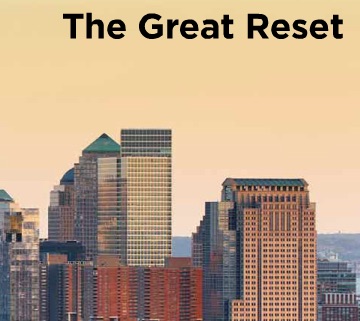


The Charleston region is facing a composite of issues that cannot be separated, but must be addressed as a comprehensive whole in order to maintain a healthy, sustainable economy. The issues that face this region are no different than – in fact, are essentially the same as – those that are covered in a new report published by the New York University School of Professional Studies (more info here).
Earlier this summer, WNYC’s Brian Lehrer Show hosted a conversation (available here) with Richard Florida, Director of the Martin Prosperity Institute at the University of Toronto, and Steven Pedigo, Director of Creative Cities & Civic Innovation at NYU’s School of Professional Studies, about their analysis of the post-recession New York City economy, The Great Reset.
This study focused on the economic structure of the New York City economy since Hurricane Sandy in 2012, a time when many considered that recovery from this devastating storm, with damage calculated at more than $18 billion, would mean that the city would fall behind cities like London and Los Angeles in terms of growth and recovery after the 2008 banking crisis. What the study finds, however, is a more robust growth cycle in the aftermath; and, more interestingly, a growing diversity in the economy, from one being largely driven by Finance, Insurance, & Real Estate (FIRE) to one that includes significant growth in the “creative industries” where people are “paid to think.” These “creative class” jobs include technologists, educators, engineers and architects, artists, people working in marketing, media, and communications, as well as researchers in health care and biotechnology. Coupled with growth in these sectors have also been more jobs in the service sector at much lower wages. This circumstance has created a new urban crisis that Florida and Pedigo refer to as – The Great Divide.
Their report outlines a series of recommendations that are intertwined and must be addressed simultaneously if New York City – or Charleston, for that matter – intends to create a sustainable, growing economy while also addressing the divides between the FIRE, service, and creative “classes.” The following is an excerpt (slightly edited for clarity) from the report’s Executive Summary – the report in its entirety is worth a read:
•Expand the entrepreneurial ecosystem – The city needs to bolster its entrepreneurial ecosystem, providing it with the resources it needs to enable ambitious people at a all levels of education and skill to turn their ideas into viable businesses.
•Nurture start-ups and high-tech industry – Supporting high-growth and high-potential startups is not the same as supporting small business growth; these entrepreneurs and enterprises need a well-connected ecosystem of mentors, capital, and advisers.
•Establish new on-ramps for the creative economy – As important as academics are, schools need to be relevant for all their students and not every career path requires an undergraduate or a master’s degree. The city’s community colleges can do much more than they are to upskill service workers and provide training for careers in creative industries.
•Increase the minimum wage – The city should adopt a minimum wage of $15 per hour and index it to its cost of living.
•Establish land trusts – Private “land trusts” could buy out the landlords of the idle properties in underutilized neighborhoods, maintaining continuity for local businesses and residents as the city’s demand profile shifts. This would eventually provide sites to builders of high-density, affordable, walk-to-work housing that would enable and encourage not just more construction, but more place-making.
•Provide renter assistance for “workforce” housing – Direct assistance to renters in the form of tax rebates or direct subsidies will be required to boost the supply of low to moderate-income housing, not only for the non-working and the underemployed, but for households where the combined incomes are at [120%, or sometimes higher, of the area median income].
•Invest in post-industrial infrastructure – [The city’s] infrastructure not only needs to be repaired and brought up to date, it must be rethought and in many ways reconfigured for its postindustrial future.
•Increase transit connectivity – Massive new investments in transit corridors will provide better access to jobs, [education, entertainment, recreation, services, etc.]. Mobility between poorly served neighborhoods also will promote more housing construction.
•Wired for the future – [Charleston] is inadequately wired and nowhere near as wireless as it should be; the city is lacking in sufficient bandwidth and speed. A public-private partnership with utilities, the City of Charleston, and SCDOT to make right-of-way space available for fiber optic cable would introduce much-needed competition.
In addition to this report, the website of the think tank Center for an Urban Future offers up-to-date reports on innovative strategies to deal with issues that face many cities. What these strategies suggest is that a vision for the future of Charleston, or any city at this time in history, must deal with an intertwined set of goals that ensure all citizens have opportunities for thriving, including affordable housing, connectivity and transit options, as well as support in developing local businesses or finding jobs that pay wages that correspond with the area’s cost of living.